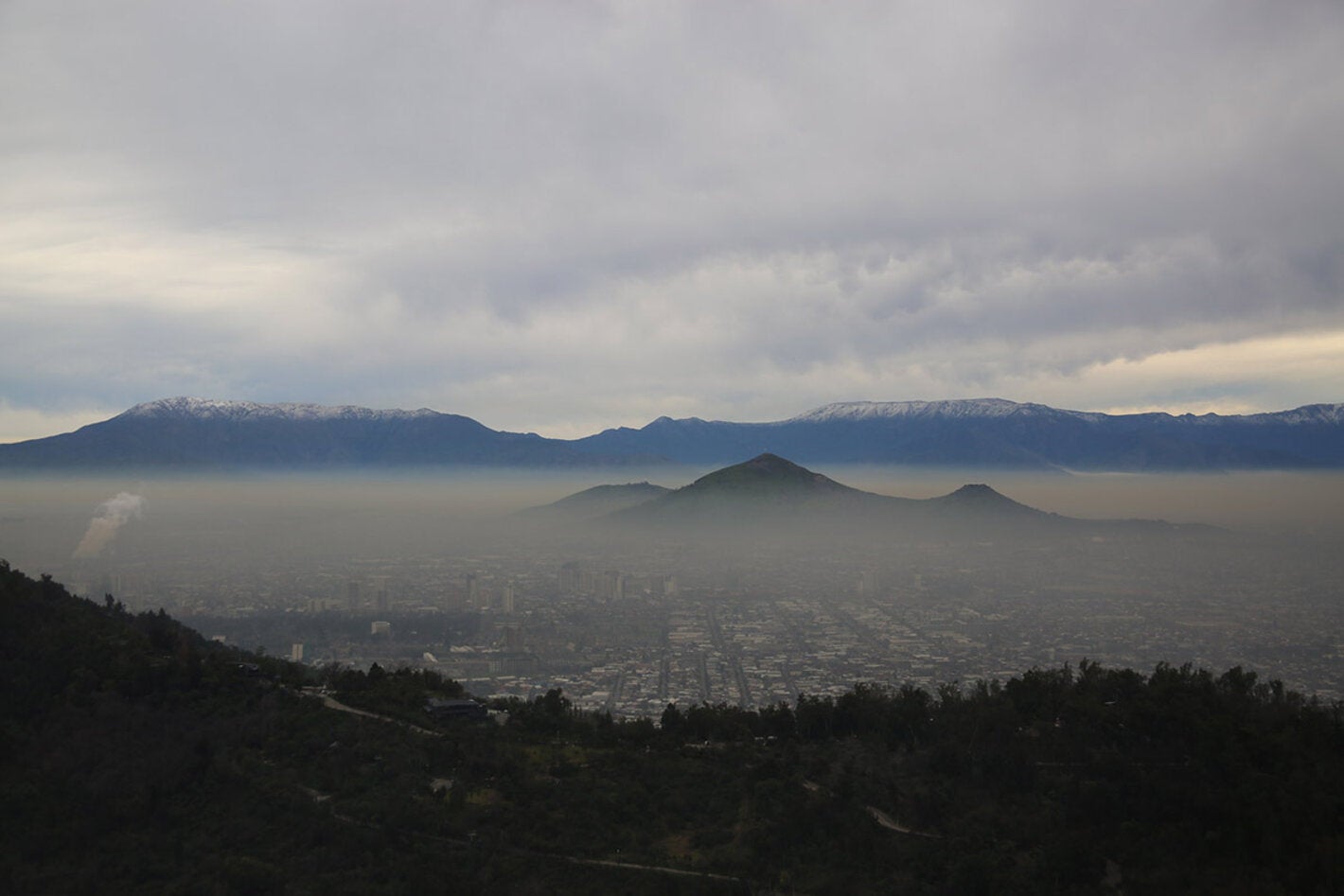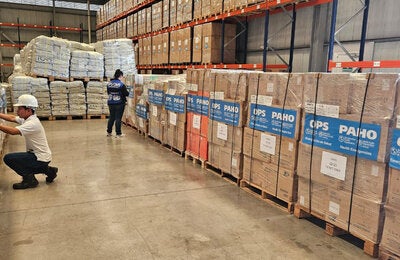
Data from the Americas suggest that 95% of urban residents in low- and middle-income countries may be exposed to air pollution that exceeds WHO limits
Geneva, 7 May 2014 (WHO)—Air quality in most cities worldwide that monitor outdoor (ambient) air pollution fails to meet World Health Organization (WHO) guidelines for safe levels, putting people at additional risk of respiratory disease and other health problems.
WHO's Urban Air Quality database covers 1600 cities across 91 countries—500 more cities than the previous database (2011), revealing that more cities worldwide are monitoring outdoor air quality, reflecting growing recognition of air pollution's health risks.
Only 12% of the people living in cities reporting on air quality reside in cities where this complies with WHO Air Quality Guideline levels. About half of the urban population being monitored is exposed to air pollution that is at least 2.5 times higher than the levels WHO recommends—putting those people at additional risk of serious, long-term health problems.
In the Americas, air quality data are available from only 17 countries out of 35 countries, with 623 of the Region's cities represented in the WHO database. Data from those cities suggest that some 95% of people living in low- and middle -income countries of the Americas are exposed to air pollution that exceeds WHO recommended levels, while about 60% in high-income countries of the Region are similarly exposed.
"The majority of cities in the Americas do not have regular air quality monitoring," notes Agnes Soares, advisor in environmental epidemiology at the Pan American Health Organization (PAHO). "Given that our region is the most urbanized in the world, this is a serious problem for public health."
Air pollution is carcinogenic and is related to both cardiovascular disease and respiratory illness, as well as it is responsible for the largest portion of the environmental related burden of diseases.
"We need to prepare the health sector to advocate for the necessary changes in public policies to guarantee air quality as a public good for the well-being of people throughout the Americas," says Soares.
Globally, in most cities where there are enough data to compare the situation today with previous years, air pollution is getting worse. Many factors contribute to this increase, including reliance on fossil fuels such as coal-fired power plants, dependence on private transport motor vehicles, inefficient use of energy in buildings, and the use of biomass for cooking and heating.
But some cities are making notable improvements—demonstrating that air quality can be improved by implementing policy measures such as banning the use of coal for "space heating" in buildings, using renewable or "clean" fuels for electricity production, and improving the efficiency of motor vehicle engines.
The latest available data have prompted WHO to call for greater awareness of health risks caused by air pollution, implementation of effective air pollution mitigation policies; and close monitoring of the situation in cities worldwide.
"Too many urban centers today are so enveloped in dirty air that their skylines are invisible," said Dr. Flavia Bustreo, WHO Assistant Director-General for Family, Children and Women's Health. "Not surprisingly, this air is dangerous to breathe. So a growing number of cities and communities worldwide are striving to better meet the needs of their residents - in particular children and the elderly."
In April 2014, WHO issued new information estimating that outdoor air pollution was responsible for the deaths of some 3.7 million people under the age of 60 in 2012. The Organization also emphasized that indoor and outdoor air pollution combined are among the largest risks to health worldwide.
There are many components of air pollution, both gaseous and solid. But high concentrations of small and fine particulate pollution is particularly associated with high numbers of deaths from heart disease and stroke, as well as respiratory illnesses and cancers. Measurement of fine particulate matter of 2.5 micrometers or less in diameter (PM2.5) is considered to be the best indicator of the level of health risks from air pollution.
In high-income countries, 816 cities reported on PM2.5 levels with another 544 cities reporting on PM10, from which estimates of PM2.5 can be derived.
In low- and middle-income countries, however, annual mean PM2.5 measurements could be accessed in only 70 cities; another 512 cities reported on PM10 measurements.
"We can win the fight against air pollution and reduce the number of people suffering from respiratory and heart disease, as well as lung cancer," said Dr. Maria Neira, WHO Director for Public Health, Environmental and Social Determinants of Health. "Effective policies and strategies are well understood, but they need to be implemented at sufficient scale. Cities such as Copenhagen and Bogotà, for example, have improved air quality by promoting 'active transport' and prioritizing dedicated networks of urban public transport, walking, and cycling."
The report notes that individual cities can take local action to improve air quality and thus go against regional trends. And good air quality can go hand in hand with economic development, as indicated by some major cities in Latin America which meet, or approach, the WHO Air Quality guidelines.
"We cannot buy clean air in a bottle, but cities can adopt measures that will clean the air and save the lives of their people," said Dr. Carlos Dora, Coordinator, Interventions for Healthy Environments, WHO Department of Public Health, Environmental and Social Determinants of Health.
Measures include ensuring that houses are energy efficient, that urban development is compact and well served by public transport routes, that street design is appealing and safe for pedestrians and cyclists, and waste is well managed. Such activities not only clean the air but can also serve as a catalyst for local economic development and the promotion of healthy urban lifestyles.
Despite the upswing in air quality monitoring, many cities in low and middle-income countries still lack the capacity to do so. There is a particular shortage of data in WHO's Africa and Eastern Mediterranean regions.
The release of today's data is a significant step in WHO's ongoing work to advance a road map for preventing diseases related to air pollution. This involves the development of a global platform on air quality and health to generate better data on air pollution-related diseases and strengthened support to countries and cities through guidance, information and evidence about the health gains associated with different activities.
Notes to editors:
The primary source of data has been compiled from official national/sub-national reports, national/ sub-national web sites containing measurements of PM10 or PM2.5, and relevant national agencies. Measurements reported by the following regional networks were used: the Asian Clean Air Initiative for Asia, and Airbase for Europe. In the absence of data from the previous sources, data from: (a) UN agencies; (b) Development agencies; and (c) articles from peer-reviewed journals were used.
Annual mean concentrations of particulate matter (PM10 and/or PM2.5) based on daily measurements, or data which could be aggregated into annual means, were included in the database. In the absence of annual means, measurements covering a more limited period of the year were exceptionally used.
Countries in WHO regions:
Africa Region: Algeria, Angola, Benin, Botswana, Burkina Faso, Burundi, Cameroon, Cape Verde, Central African Republic, Chad, Comoros, Congo, Cote d'Ivoire, Democratic Republic of Congo, Equatorial Guinea, Ethiopia, Eritrea, Gabon, Gambia, Ghana, Guinea, Guinée Bissau, Kenya, Lesotho, Liberia, Madagascar, Malawi, Mali, Mauritania, Mauritius, Mozambique, Namibia, Niger, Nigeria, Rwanda, Sao Tome & Principe, Senegal, Seychelles, Sierra Leone, South Africa, South Sudan, Swaziland, Togo, Uganda, United Republic of Tanzania, Zambia, Zimbabwe
Eastern Mediterranean Region: Afghanistan, Bahrain, Djibouti, Egypt, Iran, Islamic Republic of Iraq, Jordan, Kuwait, Lebanon, Libya, Morocco, Occupied Palestinian Territory, Oman, Pakistan, Occupied Palestinian Territory, Qatar, Saudi Arabia, Somalia, Sudan, Syrian Arab Republic, Tunisia, United Arab Emirates, Yemen
Media Contacts:
Glenn Thomas
WHO Department of Communications
Tel: +41 22 791 3983
Mob: +41 79 509 0677
thomasg@who.int
Nada Osseiran
WHO Department of Public Health
Environmental and Social Determinants of Health
Tel: +41 22 791 4475
Mob: +41 79 445 1624
Email: osseirann@who.int



